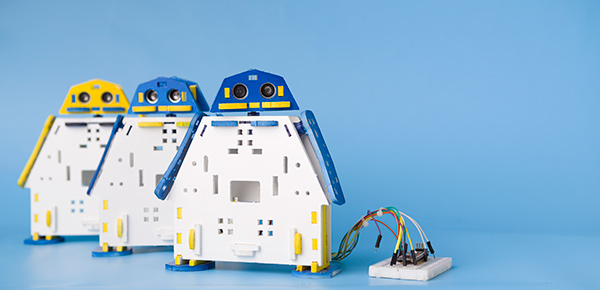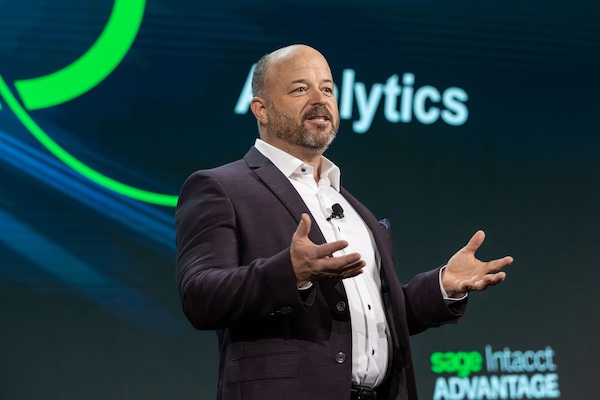The Internet of Things is preparing to revolutionize almost every sector. Traditional IT technologies do not have enough equipment for IoT.
So, what role does Blockchain technology play in the future of IoT? Here is the answer;

The Internet of Things is poised to revolutionize just about every industry. In fact, in the Vodafone 2019 IoT Barometer survey, 76% of respondents who have adopted IoT technologies say their projects are mission-critical. The problem? Traditional IT systems are not well equipped to handle the massive influx of data that full IoT deployment represents. The volume, velocity, and variety of data produced by IoT networks threaten either to overwhelm enterprise systems or severely limit the ability to trigger timely decisions against trusted data. We spoke to Beverly Macy, who teaches at UCLA Anderson and is the strategic advisor for the L.A. Blockchain Lab, about ways in which blockchain technology could overcome these impediments to a large-scale IoT deployment. Here’s what she told us.
Moving Past the Hype
Macy is optimistic about enterprise adoption of blockchain technology beyond cryptocurrency and points to research in multiple industries resulting in proofs of concept and pilot programs. “The cryptocurrency side of blockchain put a lot of excitement into the marketplace in the last couple of years, but now the real work will begin,” she says. “I think that that’s what we’re seeing with the convergence of blockchain in IoT and also AI. What is emerging is that blockchain might be (and I say ‘might’ because we’re still very early in this convergence concept) something that will be integral into how AI and IoT evolve.”
Two Decentralized Technologies: Better Together?
The current model of IoT deployment is centralized, typically via the cloud, but that hub-and-spoke structure requires huge bandwidth to implement, with each point of transfer a potential data integrity and security risk. By contrast, blockchain’s shared system of record, hash-based security, and provenance authentication could potentially limit illicit access while reducing the bandwidth required.
At the same time, the ability to embed business terms facilitates automating transactions between IoT nodes and between IoT partners. This could also reduce transmission lag, particularly if the transactions in question didn’t require the computing power of the cloud to process. “There may be interesting kinds of applications that we aren’t thinking about yet,” Macy says. “The transition from centralized to decentralized is something of a cultural barrier to overcome. It’s a complete upheaval in many ways. Does the enterprise feel like it’s losing control of data because it’s not in its own data center or in its own private cloud? Do we want to decentralize everything or just decentralize some things? Who’s going to have access to this decentralized data? Who’s going to own it?” Solutions to these questions will hopefully spur additional innovation in the space.
Enter Artificial Intelligence
Artificial intelligence (AI) and machine learning may help organizations address these questions while also offering additional ways to integrate IoT and blockchain technology. “The real challenge with IoT is figuring out, from this huge volume of data, what is the data that you really need,” Macy says. “It seems like AI can play a role there.” Using artificial intelligence, she explains, IoT/blockchain ecosystems could sift through the torrent of data to determine what information is critical to analysis and business decision-making, where it should be stored, and even what should be collected. “AI could potentially make blockchain more functional and much smarter. If it does, then that will be very helpful, especially with the terabytes of data that are pouring in.”
Use Case: Supply Chain Monitoring
One of the promising early use cases for IoT and blockchain is supply chain, Macy says, pointing to initiatives such as food safety and multinational shipping. “These are initiatives that are maturing as we speak,” she adds. On the manufacturing side, Macy has seen interest from the aerospace and automotive industries in automating just-in-time parts delivery to reduce inventory levels for automated assembly lines. “They’re beginning to have conversations with their supply chain participants about where to place sensors, as well as sensorizing cargo to track shipping.” It remains to be seen, Macy notes, whether blockchain will become a fixture within these IoT deployments, but the technology shows plenty of promise.
Given the apparent affinities between blockchain and IoT—notably the decentralized distribution of each technology—it’s easy to imagine a future in which blockchain could make IoT deployment faster, simpler, and more secure. But it’s still early days. Macy recommends that any company considering IoT and blockchain ask hard questions about whether these technologies, in tandem, will add value or not. In the meantime, she feels that an educated wait-and-see stance is appropriate for organizations not fully comfortable with the bleeding edge of technology. Nonetheless, the potential is still there for forward-thinking enterprises to devise novel ways to pair these emerging technologies. The question is, will your organization be one of them?
Blockchain and IoT
To learn more about using Blockchain and IoT together, read how Alpha Acid Brewery uses Oracle Blockchain and IoT sensors to authenticate the ingredients in its beer.
Get 2019 ERP Pricing: 45 different ERP systems profiled including Epicor, Microsoft, SAP and more. Click to download your free guide.




